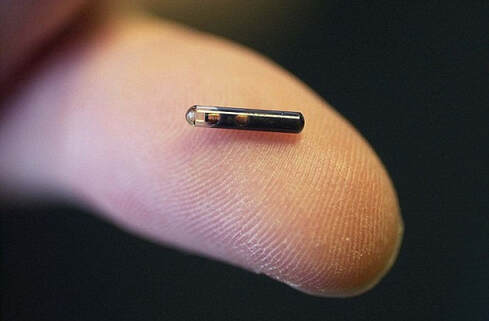What is a microchip?
A microchip is used to provide permanent identification for your pet. The chip is very small-- about the size of a grain of rice. The microchip does not contain a battery. Instead, the microchip can be read by microchip scanners that detect the electronic code embedded in the chip. The ID number scanned is attached to your contact information after registration.
|
Is it painful to insert the microchip?
Microchip insertion is similar to vaccine administration, with the exception that a slightly larger needle is used. Some mild discomfort can be temporarily experienced. However, the procedure is quick and many pets do not even notice that insertion has occurred. Some owners elect to have microchips placed at the time of spaying or neutering so that your pet is anesthetized. However, this is not a requirement and the microchip can be implanted at any appointment if desired.
How does the microchip store my information?
Registration is completed after the microchip is successfully implanted. The information you provide (typically an address, email, and phone number) will be registered into the proper microchip database. This information does not show up if someone scans your pet’s chip. The person that finds the microchip will have to call the company to obtain contact information. Most companies will only give this information out to shelters or veterinary clinics as these are where pets are typically brought when lost. Once the company has been contacted, they will send an alert to you that your pet has been found. It is important to update your contact information if you move or get a new phone number so your pet can be reunited more quickly.
Isn’t a collar good enough?
Collars can fall off and be removed. Collar tags also often wear to the point that you cannot read the information any longer. A microchip is permanent and the information stored cannot be misread. The information registered is always retrievable from the database in the case that your pet is lost and scanned.



